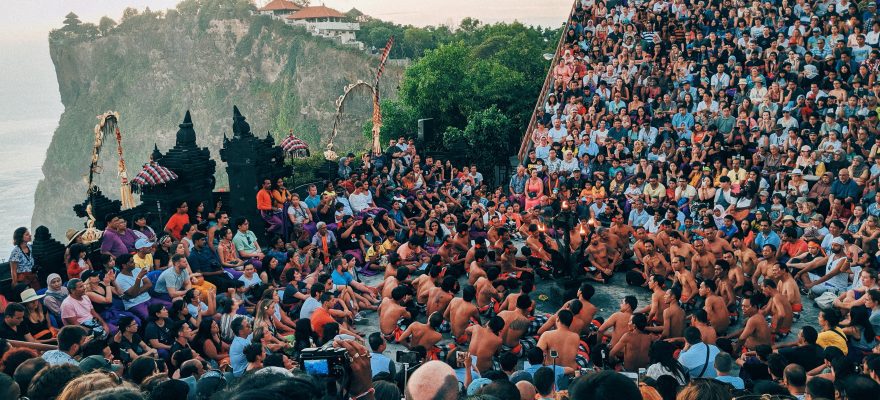June 11, 2019. This was my penultimate day in Bali. My friends and I booked our flights separately, and we were to return to Manila on different days. I was going ahead because I wanted a full recovery day before going back to work the next day.

So on our last day together in the island, my friends and I spent a good part of the afternoon exploring the Garuda Wisnu Kencana (GWK) Park in south-central Bali. GWK is a cultural theme park centered around the gigantic 21-story tall monument depicting Hindu deity Vishnu riding the legendary bird Garuda. The entire complex felt like a modern theme park complete with standard theme park amenities and shops, minus the rides. It’s a relatively new development on the island, and I think they plan on setting up more amenities in the next few years.
There is an hourly cultural show at the amphitheater where Balinese dancers perform different sets of dances, depending on the schedule you get to watch. That afternoon, we were able to catch the Barong Keris dance, which depicts the mythological tale of a half-lion spirit beast and a Bali noble family. To be honest, I had to rely on the pamphlet to understand what was going on.




Late that afternoon, we proceeded to the Pura Luhur Uluwatu temple (or simply the Uluwatu temple) to take in the sunset from the southwestern tip of the island. The temple complex is situated literally on the edge of the island, on magnificent cliffs that protrude into the sea and drop straight into the ocean, with waves crashing onto the shore. It was a sight to behold, especially at golden hour. I would like to talk about the temple and its religious significance, but the temple is actually just a small part of the complex and much of it is off-limits to the hoards of tourists that flock to the picturesque location, so I wasn’t really able to appreciate the temple itself.
The park hosts hundreds of monkeys, so be careful with your caps, sunglasses and other belongings. Rap, one of my friends, had his shades snatched away from him as we were walking towards the cliffs.



Every night just as the sun sets on the temple complex, a kecak dance is held and performed at one of the amphitheaters.
The dance was an amazing performance for what it lacked–musical instruments. The entire dance drama depicting the Hindu Ramayana epic is portrayed using only the collective chorus of human vocals in place of gamelan instruments. The men, in various vocal ranges and beats, repeatedly chant kecak kecak kecak (pronounced as keh-chak) hence the name kecak dance.

What makes the experience of watching the performance incredible is that it is set against the backdrop of a beautiful sunset, with a view of the temple perched on top of a cliff and the vast ocean behind, together with the sound of the ocean waves crashing onto the shores.
It was a perfect cap to this short vacation!





